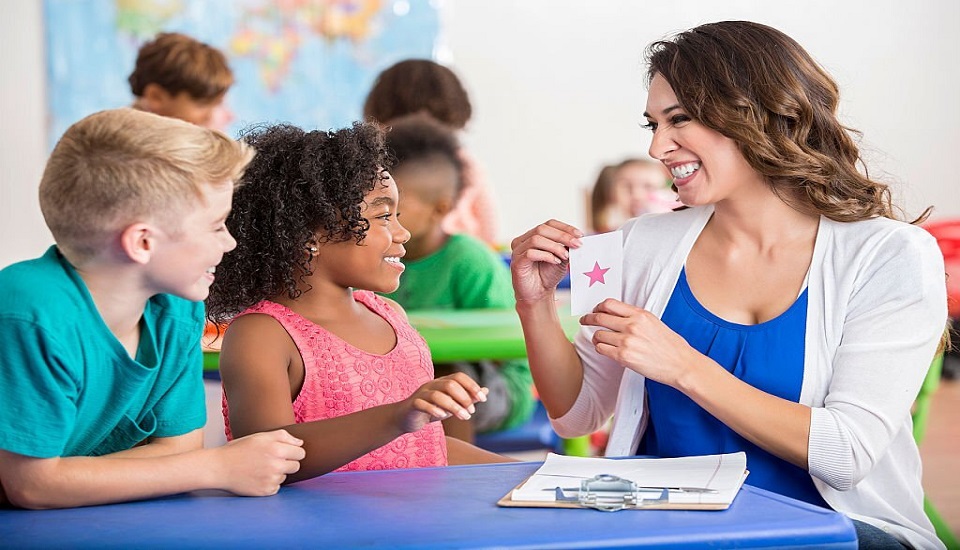Helping Pre-schoolers To Gain Problem-Solving Skills
13th May 2022

One of the biggest aspects of classroom management is to teach your students how to solve an issue. Effective problem solving is a key quality that is required everywhere as the world is full of chaos and to survive, one must know have problem-solving skills thereby, making the decision-making process smoother.
Kids often fight among themselves and have arguments about stupid things. They do not have the maturity to ignore fights that are having no credibility. Be it over a toy, sharing of tiffin, playing games, etc., preschool teachers solve such tiny and petty conflicts on behalf of pre-schoolers. Problem-solving skills for pre-schoolers should be a separate yet essential agenda that every preschool teacher must follow.
Pre and primary teacher training courses guide pre-schoolers to understand the benefits of problem-solving abilities and have designed a curriculum where they mention numerous problem-solving skills for kids.
Learning to make good decisions and solving problems thereafter is extremely important to sustain. I have seen parents who always spoon-feed their kids and do every job themselves rather than letting kids work on issues themselves.
Preschool teachers have said that tackling a kid on their first day in preschool is tough because they don’t even make friends easily and end up fighting with others. Learn how to help kids handle their first day in preschool.
As we have already mentioned that kids often pick up silly fights in school, and they come back home and share these things with their parents. Parents, however, prefer communicating with the class teacher and asking the teacher to solve the issue. Well, that is no sport because that makes a child dependent on teachers and parents. They will lose the capability to tackle any problem and will prefer nagging rather than finding a solution.
Pre-schoolers should be taught problem-solving strategies so that they can solve complex problems down the line efficiently. To develop problem-solving skills, preschool teachers are breaking the steps of solving issues into 5 parts. Kids who are excellent problem solvers can become the most valuable team members when they grow up. To help them, pre and primary teachers have come up with these steps.
First thing first, identifying the problem is important and that should be done before jumping to any conclusion. It can be anything under the sky and due to the involvement of many children, they often forget what the basic reason behind a conflict is and they just let it flow smoothly. It can start from a petty issue.
Suppose there are 3 friends Chris, Sergio, and Keylor and they all are in the white house of the school. However, one day Chris wants to change his house from white to red because he feels that he connects more with Bruno, another kid from the red house. While sharing the news with Sergio and Keylor, Chris faces a lot of anger from Sergio and it ultimately leads to a conflict. Finally, the teacher arrives and puts an end to the conflict.
In this case, Sergio and Keylor should have found out the root of the problem and defined it as well. They should have heard from Chris why he was feeling more connected to Bruno. It might be due to any activity, the same coaching class they were sharing, playing the same sport, and so on.
Thus, identifying the problem at the grass-root level often opens up multiple solutions. Kids should be taught to brainstorm and find out at least 3 solutions when they can figure out the reason behind the conflict. Having 3 different solutions will end having the pros and cons of every solution.
That brings me to the next step that evaluating and assessing the pros and cons of each step. Now, it will be difficult for a kid to judge both sides of the coin, and hence a pre and primary teacher will have to hold their hands and teach them how to evaluate any consequence. Once they understand the impact of every positive and negative outcome, kids will automatically learn ways to get rid of negative outcomes. Hence, they will stick to solutions having positive grounds only.
Once they pick up a solution, they will have to test it for practical reference.
Conflicts can be academic as well where they can be related to solving math problems and assignment problems and the list is endless. If kids learn to use those 5 steps- identifying the problem, brainstorming at least 3 solutions, weighing the pros and cons of each solution, picking up a solution, and then testing it for real, they will become independent enough to handle any problem and reaching a solution.
Every preschool teacher should be aware of such facts. There are certain pre and primary teacher training courses that guide preschool teachers to the fullest. For more help, call our toll-free number 1800-212-6400.
Written By : Nilesh Singh











